#223. Postmarked July 5, 1966, Address Mrs. Douglas Green, E. Lansing, MI.
Tuesday a.m.
Dear Helen,
I’ll maybe have time for this before the postman comes. He’ll be late because of the extra days accumulation. I’m sitting on my nice back porch and there is a breeze but the temperature and humidity are both very high so I’m not hunting a sweater. When Ersie comes in from work, he says “what is it about the frost on the pumpkin.” Gladys is on vacation and has about cleared the room. Bees are in that front chimney and honey is running clear down to the floor in both rooms – runs down and makes a puddle on the floor. I suggested dropping a cherry bomb down. As to date, they are doing nothing but mop it up.
Marie and I had a most wonderful visit in spite of the heat. We ate lunch at Edina Saturday and stopped and visited a couple of hours with Aunt Nell. She couldn’t come here yesterday because of another funeral. Marie was amazed at the change in Nell’s attitude and appearance. Sunday at church we had so many guest ‘homecomers” because of the holiday. Jim Martin certainly has come a long way from the boy I first knew in Canton1. It has maybe been 15 years and he accumulated an AB, AMA, and PhD. Oh yes, I was talking about Sunday. We went down to Jeanette’s once for cake and cool-aid but maybe that was Saturday. Late Sunday we took a long country drive. Saw dozens of little Peter rabbits and once all four famous ones with mama and papa – tiny ones just scampering at the side of the road. We even went up the lane to look at our house, to me it was still our “new house.” But it is 51 years old and looks its age and everything about it is very unattractive – your father wouldn’t be pleased with it.
I must run down to Jeanette‘s. Gladys said a truck came earlier for Jim’s furniture. I’ll be glad to have all of you for a visit in August sometime. I think it can’t be true.
Love, Mother
[May Emma Northcutt Hinkson]
When May Northcutt Hinkson (1880-1975) smelled smoke while stripping the beds in preparation for the day’s wash, she knew something was wrong and that she needed to act fast. She had only been gone for a few minutes and had thought nothing of leaving the stew on the stovetop to simmer all day as she went about her typical Friday housework. But when she ran downstairs to check the kitchen, she discovered the smoke was coming from the kitchen. Instead it was pouring from a crack near one of two fireplaces that kept the house warm. Her greatest fear was quickly confirmed. The house was in fire and she needed to act fast. She quickly ran to the front hall and phoned for help. Then she began doing all she could to save as many treasured items as possible.
The Hinkson family farm was only a mile and a half north of LaBelle. But even so, she knew it would be at least ten or fifteen minutes before help could arrive. Fortunately, the LaBelle switchboard operator had answered her ring immediately. She quickly instructed the operator to call the school so someone could alert her husband, Tom, and then to phone the neighbors and tell everyone to please bring buckets to help. Tom had only left a half hour ago to take the children to school. Next, she began running from room to room to save what she could, tossing any unbreakables out the window in the process.
I know this part of the story well because I was gifted two items that were tossed and saved that day. The first was a silver serving dish that was a wedding gift to May and Tom when they were married in August 1903. The second was a small gold locket that belonged to my grandmother Helen. She gave it to me on my 16th birthday.
To look at the locket, one might never guess its history or that it’s over a century old. But the locket bears the evidence of the Hinkson home fire and my great-grandmother’s mad dash to save the “family treasures.” Its back cover is dented, damage which had occurred when it was either stepped on or impacted by another tossed item. It laid outside in the yard for several days after the fire.
There had actually been two lockets tossed that day. One belonged to my grandmother Helen, the other to her older sister Virginia. Unfortunately, Virginia’s was never found. Years later, I discovered this photo of the two sisters wearing their lockets among the photos in my grandmother’s hope chest. I asked her if I could have it to keep with the locket, and she happily obliged. From the age of my grandmother in the photo, I’m guessing it was taken the same year that the fire occurred. My grandmother Helen was seven years old when her family home burned down on November 20, 1914.
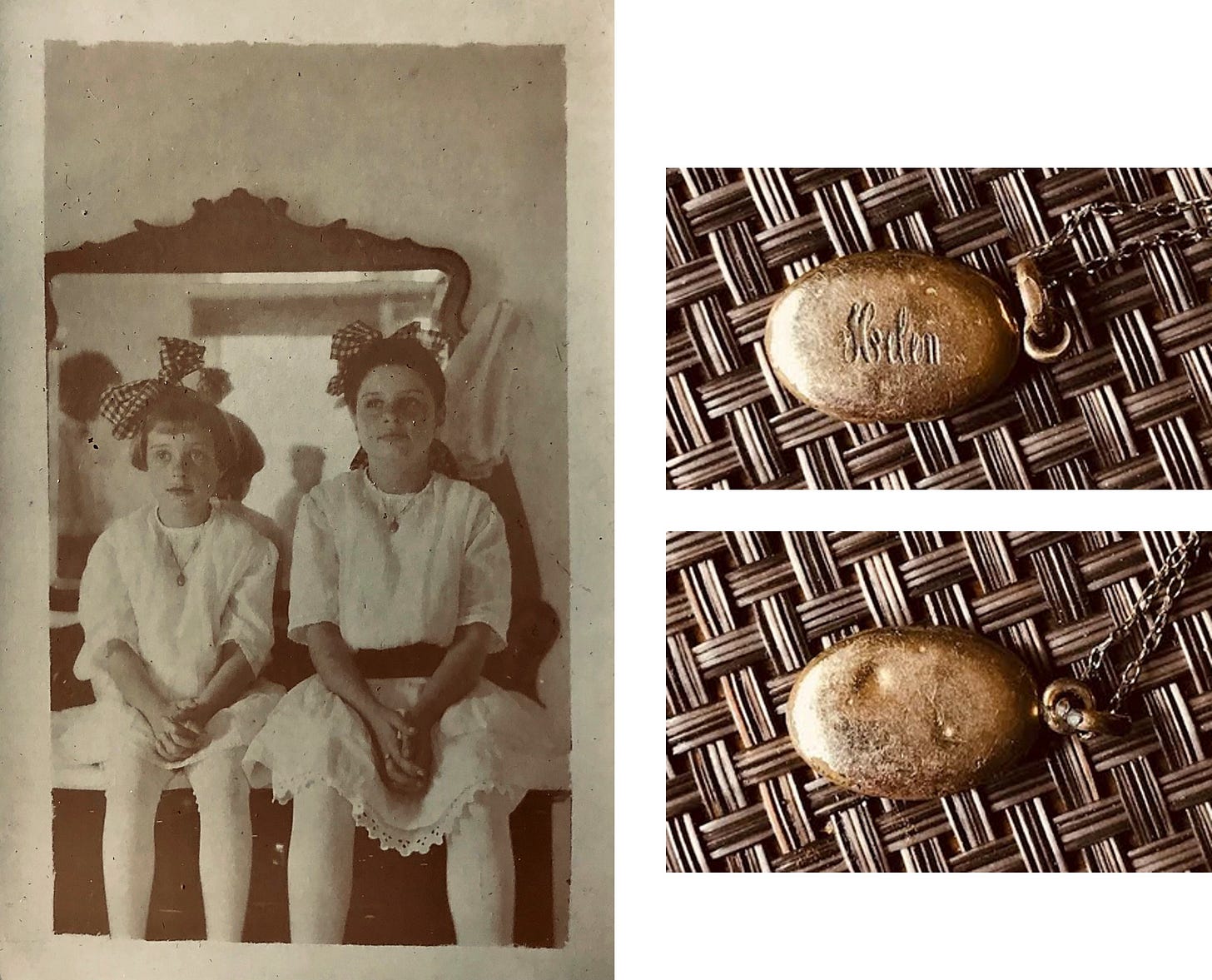
The original Hinkson home had been built by Tom’s father, Harvey Hinkson, sometime in the mid-1800s. According to National land records, Tom’s grandfather, John, was among the first to acquire land and settle in the newly designated Lewis County in 1838. Between 1853 and 1854, Harvey would add to the original acreage he inherited from his father to amass nearly 1,200 acres just north of LaBelle. Most of his fortune had been acquired during the 1849 Gold Rush. But that’s another story for a future chapter, so I will hold off for now on sharing it.
The 1897 Atlas of Lewis County, MO, shows the boundary lines for Harvey Hinkson’s 1,000+ acres, making him one of the largest landowners in Lewis County. On this map, you will also find 120 acres owned by J.E. Hinkson, adjacent to Harvey’s land. Harvey had apparently sold John E. Hinkson (his oldest son) this acreage in the few years before this map was published.
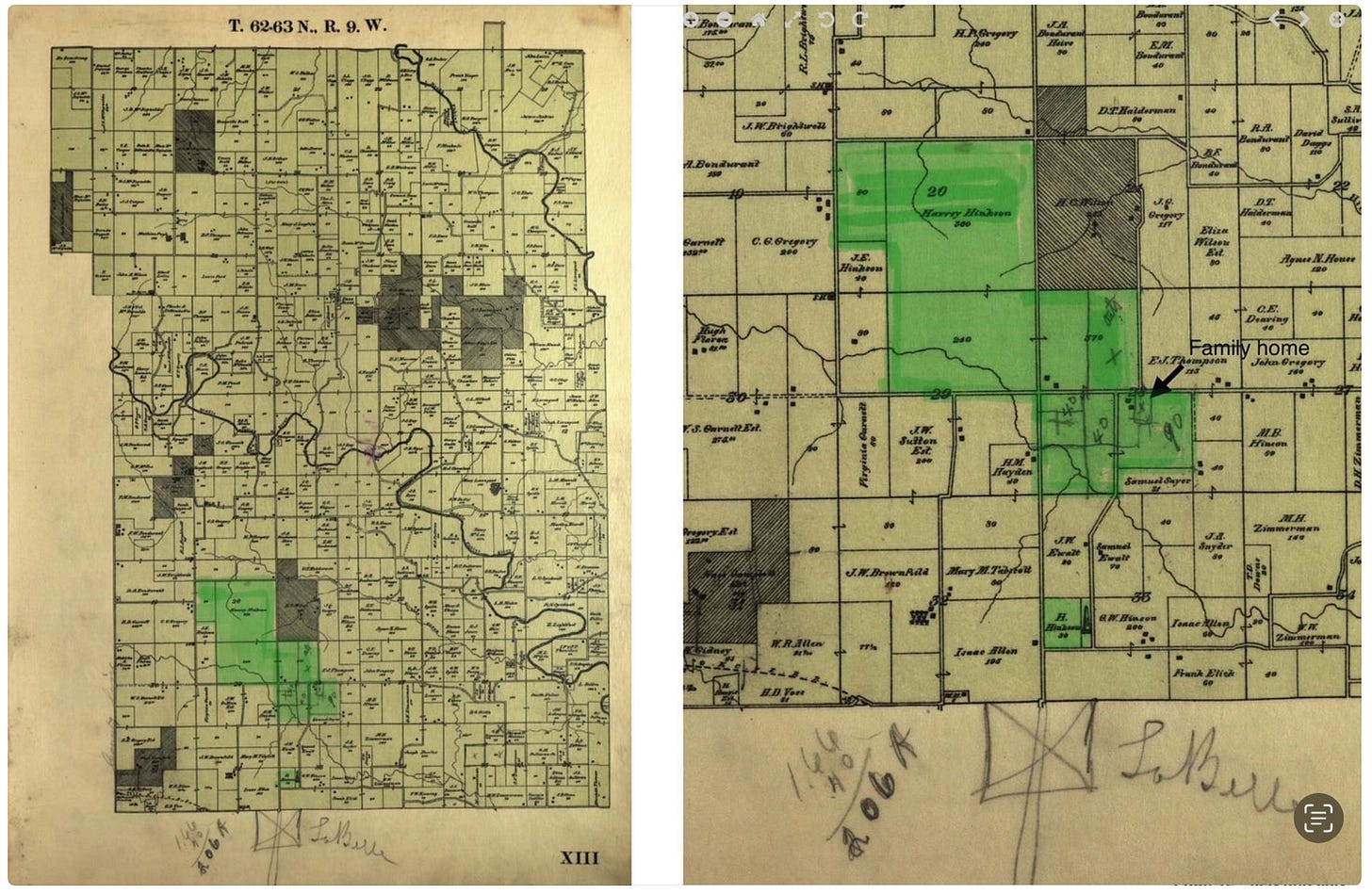
It’s very interesting to note that this archived copy of the Atlas found online at the Missouri State Historical Society archives contains pencil mark notations about some of Harvey’s land being broken up. Surprisingly, it’s the exact location of the land that eventually became Tom Hinkson’s land. Part of it he purchased from his father. The other he acquired by inheritance when Harvey N. Hinkson died in 1903.
Before Harvey died, he and his wife moved into town in 1896, while Tom and his brothers continued to work the farm. Records show that Tom purchased some of his father’s land in 1901. It’s amazing to me to think that this archived copy of the atlas is the actual document that was used to figure out this land transfer.
Through previous correspondence with distant cousin Reba Hinkson Florea (the daughter of Tom’s younger brother Earnest), I have a photo of Harvey Hinkson’s home. But I believe it is a photo of the home Harvey and his wife Harriet moved to in 1896 when they relocated “in town”, not the farmhouse that burned down. This home has a veranda that looks more appropriate for an ‘in-town home’ and seems to match up with a news item I found. This notice talked about the Hinkson purchase of a property, including the addition of a “pretty veranda” and an additional room (viewable on the right side of the back of the home).
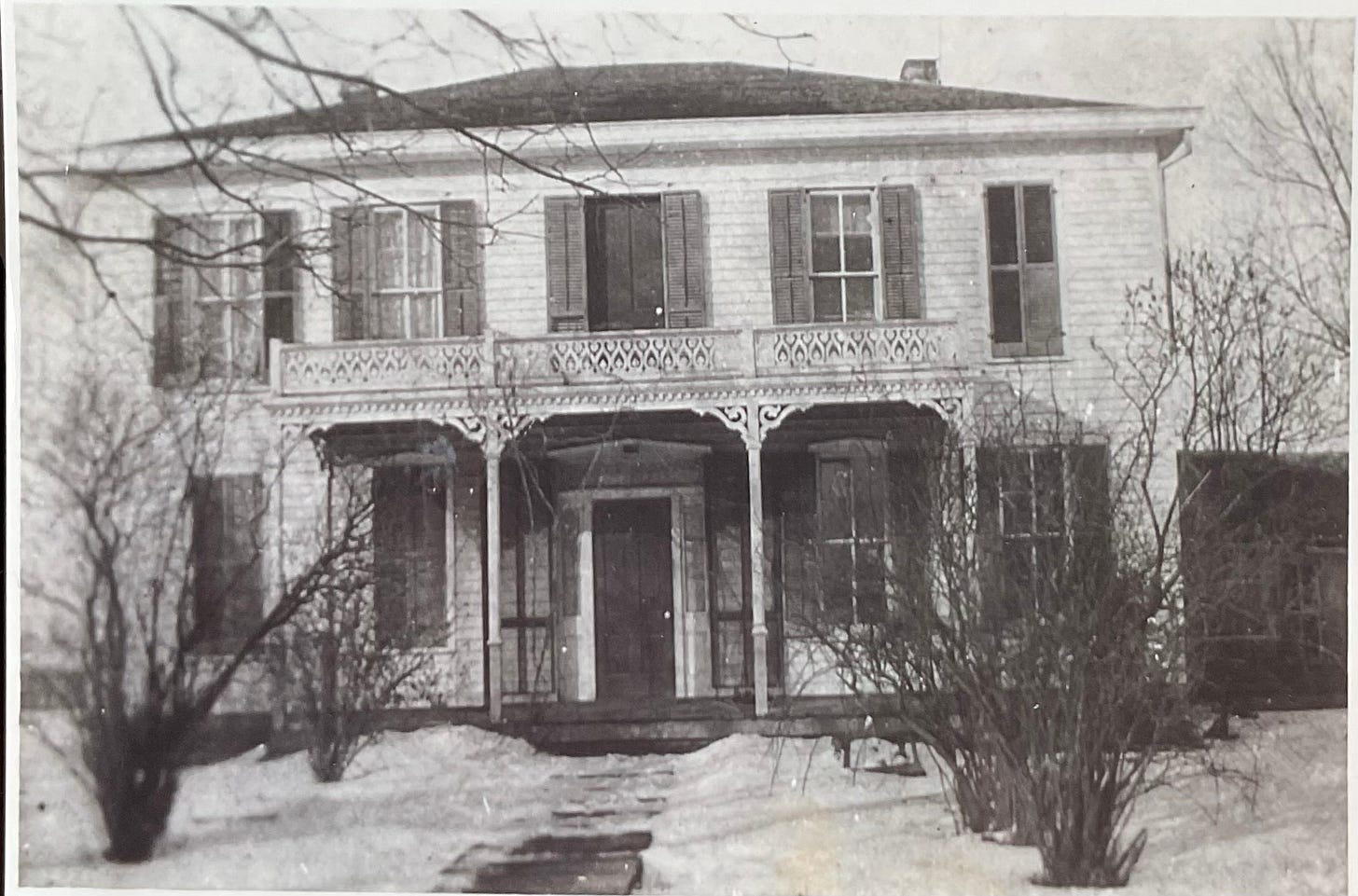

Of course I could be wrong on this assumption, as the photo also matches up with the news item below regarding the fire. It describes the home as a “large two-story structure.”
The loss of the Hinkson farmhouse was reported on page 1 of the LaBelle Star. It was fortunate that the family was able to remove as many items as they did with the help of neighbors and men from town. But the home itself was a total loss. Unfortunately, this was typical whenever buildings caught on fire. The LaBelle as a community lacked firefighting equipment.
The talk of purchasing a fire engine for the community had been a hot topic of dispute for nearly two decades. Although many communities had organized volunteer firefighters and purchased fire engines in the late 1890s and early 1900s, LaBelle had not yet made the leap. It would be almost another decade before they finally did so in the summer of 1923. Before that time, it was almost certain that if any home or building caught on fire in LaBelle, it was more than likely a total loss.
The Hinkson farmhouse fire left the family stranded during the height of the holiday season. The fire had occurred the day after Thanksgiving. Christmas was exactly four weeks away. The family initially sought refuge with their family in Knox City, but with Knox City being seven miles away, the family needed something more permanent. They found it at the home of an old family friend who had moved to town after her husband died. Mrs. Lucy Hinson had been a widow since 1907, with only one teenage son at home. She had two rooms in which she could temporarily house the family while they contemplated their next steps. During this transition, Tom commuted daily from town out to the farm to continue tending to the farm’s operation and livestock.
Building a new home was expensive. But as luck would have it, the LaBelle community had a large structure that was no longer needed. Just six before, it had laid the cornerstone on a new brick two-story school building, leaving the old wooden schoolhouse empty.
I am unsure if the town of LaBelle put the old building up for auction or if Tom Hinkson and Lewis Wright approached the Board of Education to buy it first. What I do know is that the two men went in on a bid to purchase it, with the plan of using the lumber to each build new homes for their families. The notice of the building’s purchase was, of course, big news in LaBelle. The two men split the lumber, windows, and all materials that the building yielded. Tom also purchased the school’s foundation for the building of his home. With what appeared to be a wooden building, I’m not sure what a foundation would have entailed.
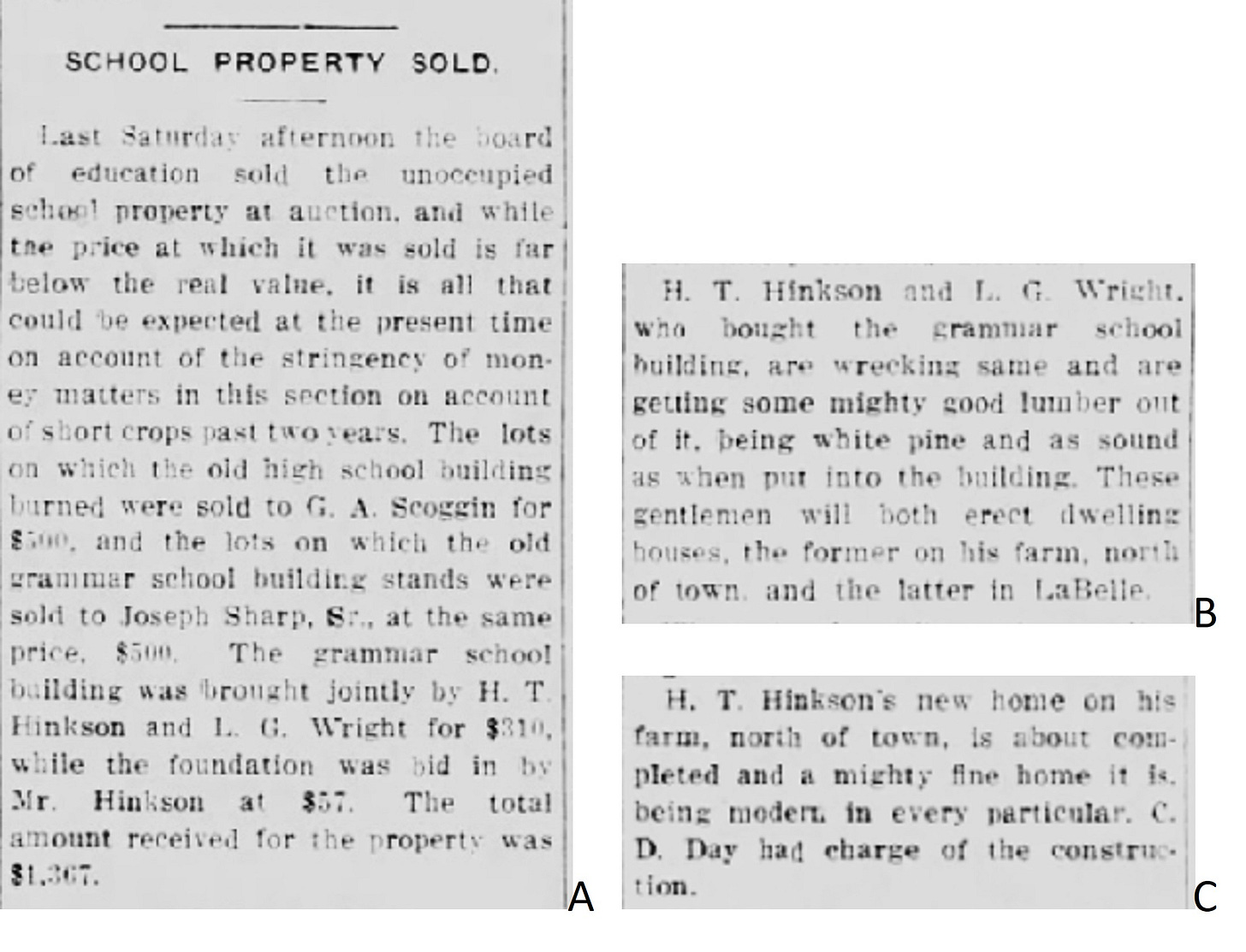
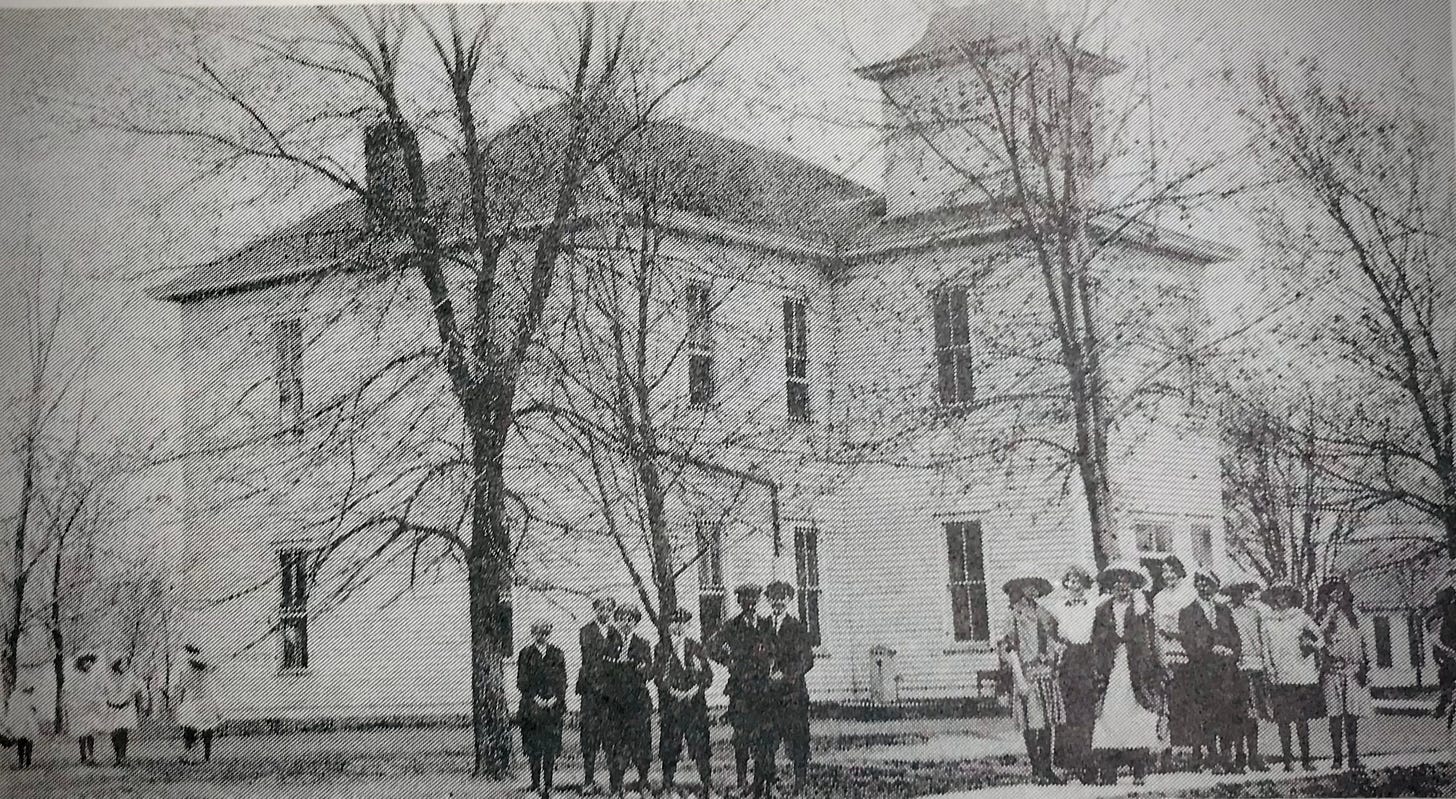
It seems like Tom and May must have hired the right person to build their new home. Within seven months of the disastrous fire that left them homeless, they were able to move back home. In 1915, the family hosted both Thanksgiving and Christmas celebrations. With a new home and a very unsettling year behind them, I am sure it felt good to be back on familiar ground. This photo of the newly completed home shows Tom sitting in a chair in the front yard.
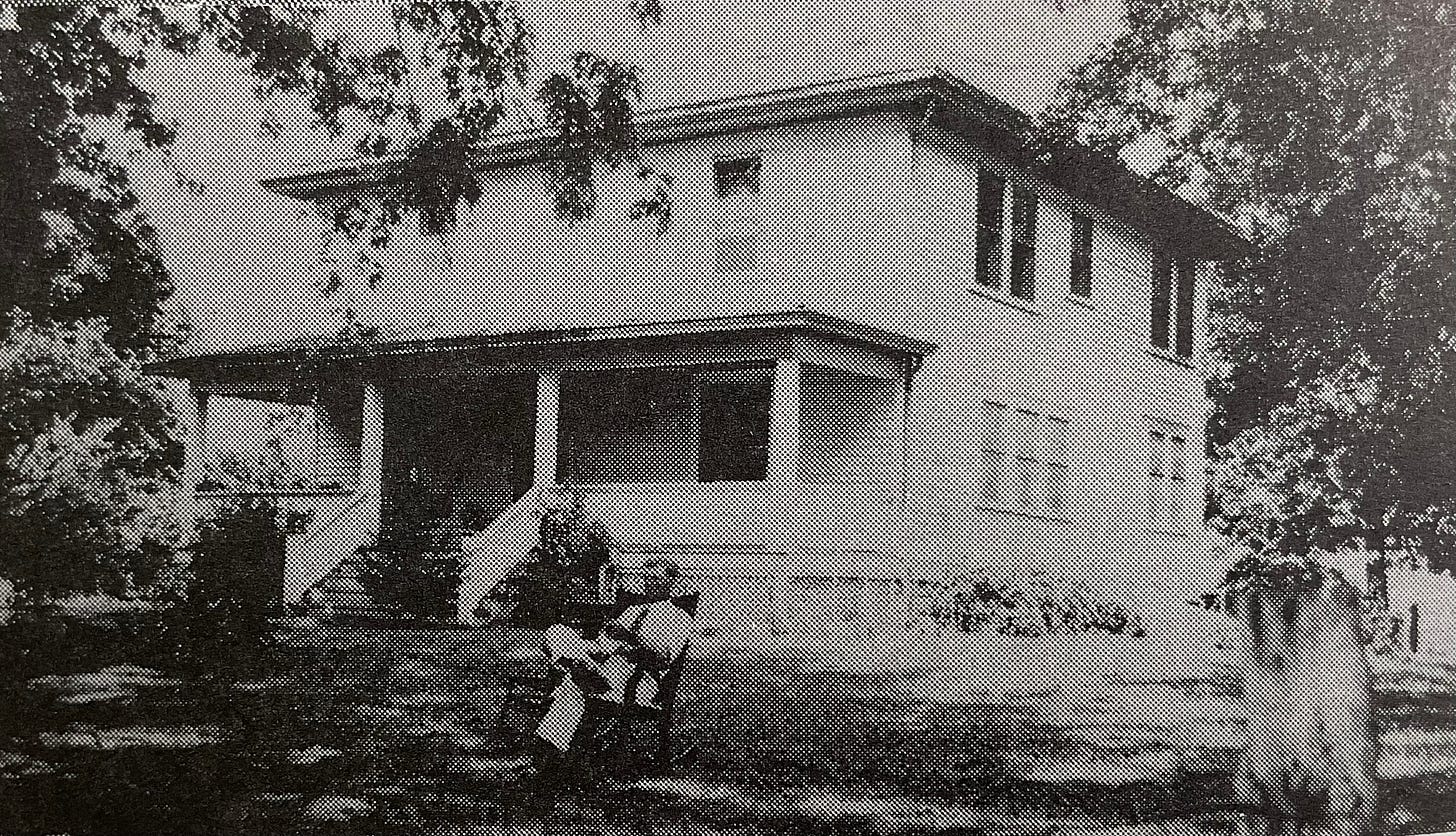
I believe the home is still standing because the Google satellite view of the property shows a home with a roof line like the photo above. I was also able to find a vintage aerial photo of the home and farm from 1979 in an online archive. Because of copyright, I can’t include it here. But you can view it yourself by following this LINK. Here is the Google satellite photo along with an overview of the property that Tom and May Hinkson owned.
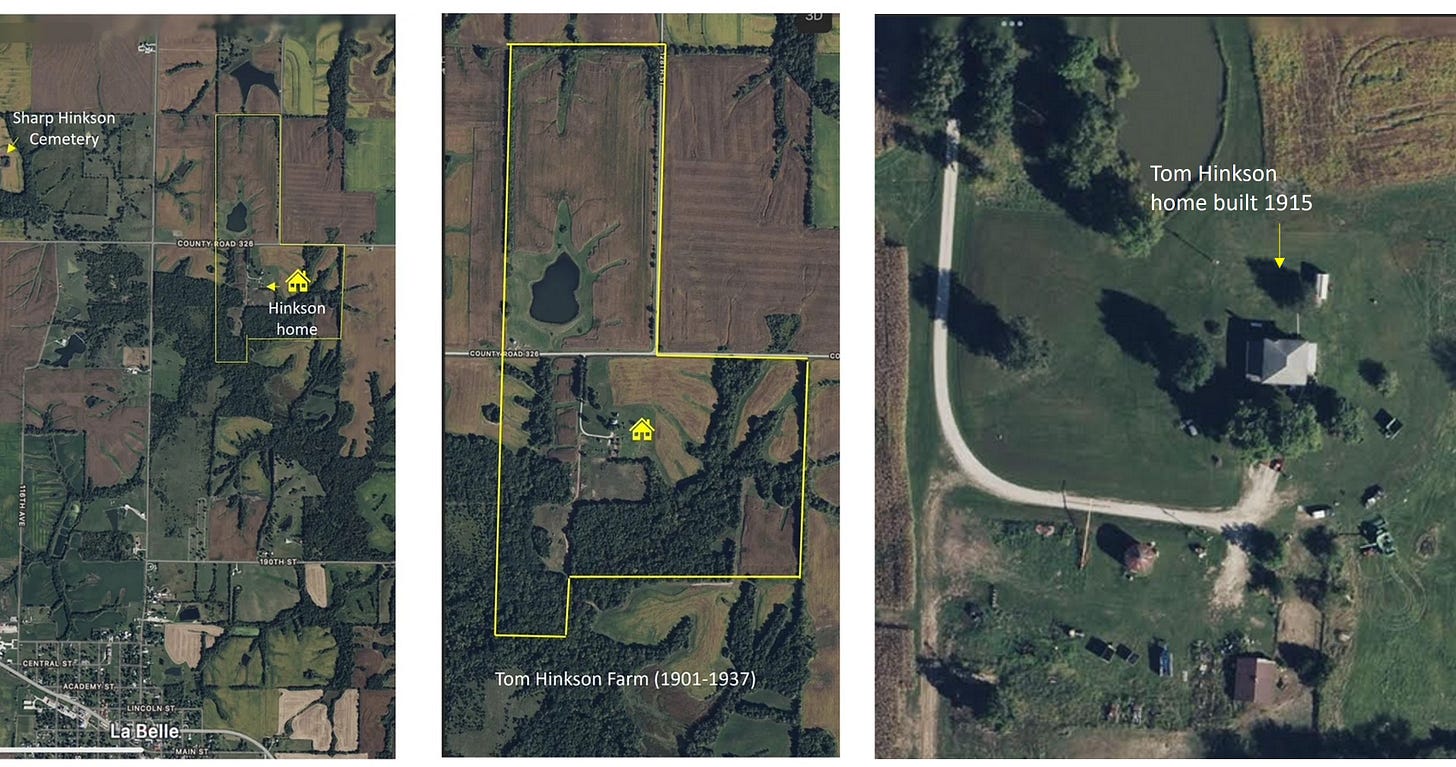
The family farm remained in the family's possession until 1937, when Tom Hinkson died. Records show the land in Lewis County was acquired by John Hinkson, Tom’s grandfather, on August 2, 1838. The portion of Hinkson land that Tom and May had farmed had been part of the original 80 acres settled by his grandfather. It had been in the family for nearly a decade (actually 99 years, 4 months, 22 days) when it was sold to James Schrimsher in March 1937; A legacy well worth noting.
May Hinkson worked as a house mother for a fraternity on the Culver-Stockton College campus in Canton for five years, 1952-1957. A future chapter is coming on this period of her life.










I love how you included the lockets. Jewelry is quite a tie to family history, isn’t it?